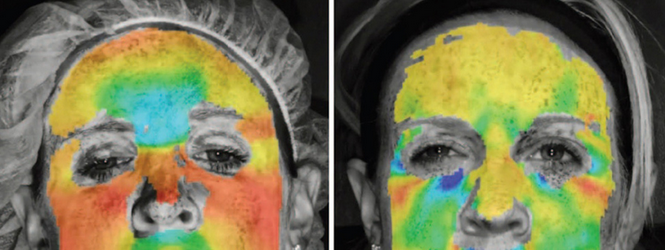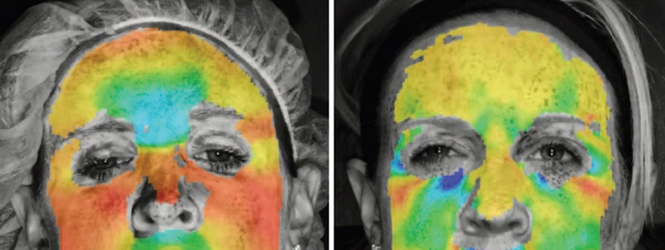Botox Injections As Wrinkle Treatment: Heat Maps Show Efficacy Of Toxin Via 3D Imaging Technique

The desire to remain forever young leads people to splurge on the latest serums, creams, lotions, and cosmetic procedures that hold the hope of eliminating the visible signs of aging. These products claim to outsmart aging by targeting wrinkles, age spots, and uneven skin tone, but do they really work? In a recent study published in the journal Plastic and Reconstructive Surgery, heat maps revealed Botox has both significant cosmetic and psychological effects on patients.
In the U.S., women continue to be the driving force for facial plastic surgery, making up 82 percent of all surgical and non-surgical procedures, according to the 2014 AAFPRS Statistics on Trends in Facial Plastic Surgery Report. Botox injections are among the most common non-surgical procedures along with hyaluronic acid fillers, non-ablative skin resurfacing and peels, and microdermabrasion treatments. The procedure is mostly performed on women between the ages of 35 and 55.
The effectiveness of Botox lies in its highly purified toxin bacterium Clostridium botulinum. It can temporarily erase or reduce horizontal forehead lines, vertical frown lines, and crow’s feet. The injection works by slowing muscles that contract hundreds of times a day and smoothing out lines. The results vary from patient to patient, but they typically last three and a half to four months.
To evaluate the efficacy of Botox, a team of researchers at the Perelman School of Medicine at the University of Pennsylvania were able to create a color-coded heat map via the 3D speckle tracking photogrammetry. This technique helps researchers measure dynamic facial wrinkles and their subsequent reduction following injection. In the study, a total of 14 participants were observed before and two weeks after a Botox application of 20 units of filler in the area between the brows.

The researchers randomly applied white foundation and black speckle makeup. In the pre-treatment heat map, light blue represented wrinkles. Two weeks after treatment, the light blue was largely replaced with light green and yellow. These new colors are representative of the decreased skin compression or wrinkling. Alongside the color changes, the system allowed the precise measurement of wrinkle reduction to signal improvement.
For example, horizontal wrinkling in the treated area decreased from 9.11 percent to 2.60 percent and from 4.83 percent to 0.83 percent in the forehead following injection. The vertical stretch in the forehead decreased from 6.73 percent to 1.67 percent. The average vertical stretch of the area during brow furrowing dropped from 2.51 percent to 1.15 percent.
The heat maps show the effectiveness of Botox in reducing wrinkles, which is extremely useful for improving cosmetic and reconstructive surgery. “As new therapies and expanded applications become available for antiaging and the treatment of neuromuscular disorders, this method may make it possible to quantify clinical efficacy and establish precise therapeutic regimens,” said senior author Ivona Percec, director of basic science research and associate director of cosmetic surgery in the division of plastic surgery at the Perelman School of Medicine at the University of Pennsylvania, in the news release.
Future studies will still need to explore the use of digital image correlation in larger groups. This will help physicians objectively analyze wrinkle reduction and other components of Botox, such as optimal dosage to obtain the best aesthetic benefit. Currently, static photographs and subjective visual assessments are used to measure wrinkle reduction, which are prone to errors.
This innovative technique will help assess the clinical efficacy and help solidify accurate therapeutic regimens as new therapies and applications for antiaging treatments and neuromuscular disorders become available.
Source: Chin B, Hsu V, Mirzabeigi M et al. Digital Image Correlation: A Novel Dynamic Three-Dimensional Imaging Technique for Precise Quantification of the Dynamic Rhytid and Botulinum Toxin Type A Efficacy. Plastic & Reconstructive Surgery. 2015.
Published by Medicaldaily.com



























